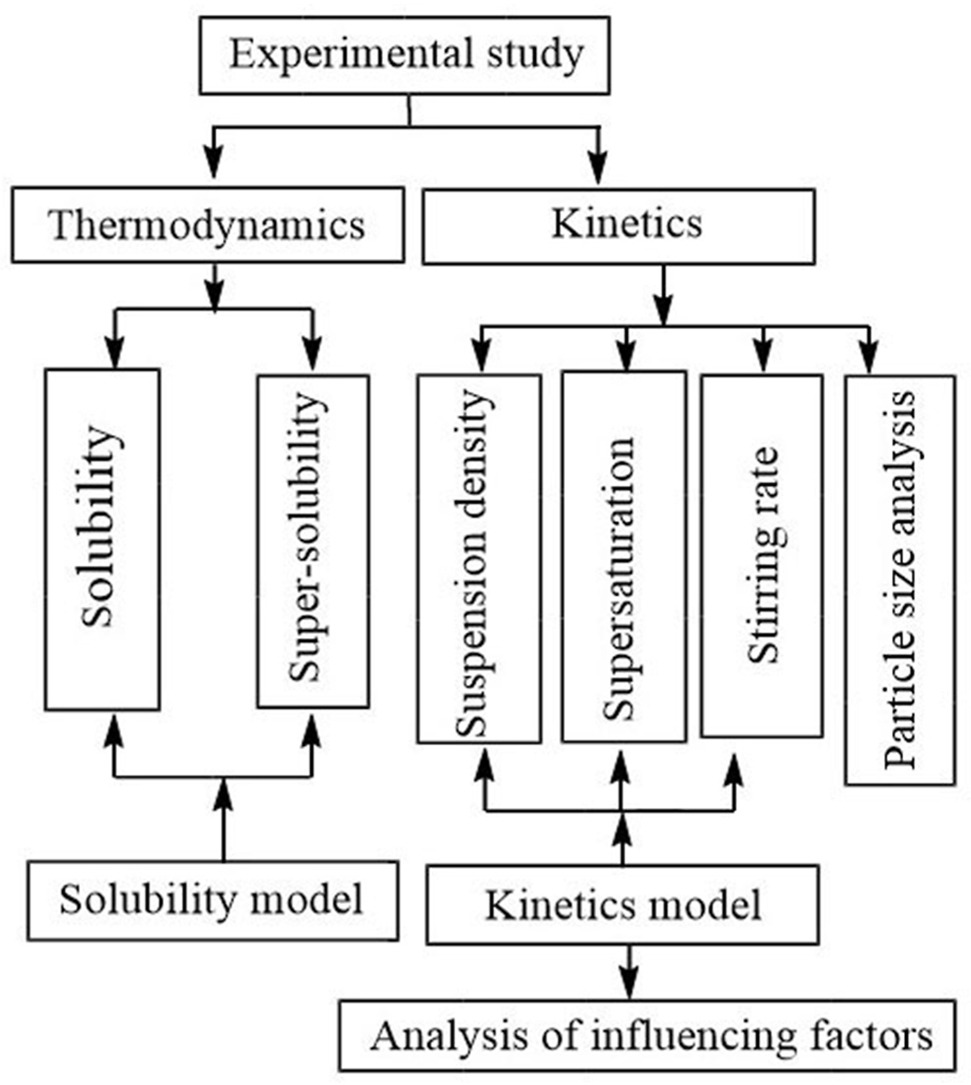• Used three models to correlate crystal solubility data and determine optimal solubility-fitting model.
• Utilized two models to find solid-liquid surface tension and crystal surface entropy factor of NaH2PO4 in the system.
• Applied Van't Hoff model to calculate molar enthalpy, entropy of dissolution, and Gibbs free energy.
• Derived kinetic equations for NaH2PO4 nucleation and growth rate, the ASL model fits experimental data well.
The application of sodium dihydrogen phosphate (NaH2PO4) in drinking water and food processing underscores the importance of its crystallization process, which significantly affects product quality and yield. In this study, the dynamic laser method was used to explore the solubility and super-solubility of NaH2PO4 in H2O-ethylene glycol (EG) binary systems of different proportions. We first applied the Apelblat, Van't Hoff, and NIBS-RK models to correlate solubility data and identified the best-fitting model. Then, the Mersmann and Barata models were used to determine the solid-liquid surface tension and crystal surface entropy factor. The Van't Hoff model calculated the molar enthalpy, entropy of dissolution, and Gibbs free energy. Experimental results showed that dissolution is endothermic and spontaneous, mainly driven by enthalpy changes, while crystallization is exothermic, providing key data for kinetics research. In the kinetics analysis, NaH2PO4 crystallization was found to be linearly correlated growth, with the logarithm of crystal particle number density positively related to particle size. Comparing the CR and ASL models, the ASL model better reflects the growth rate. The derived nucleation and growth kinetics models indicated that growth and nucleation rates are positively correlated with temperature and supersaturation ratio. During cooling crystallization, the supersaturation ratio has a greater impact on the growth rate than the nucleation rate and a more significant effect on nucleation than suspension density and stirring rate. This research offers valuable guidance for high-quality NaH2PO4 industrial production.

